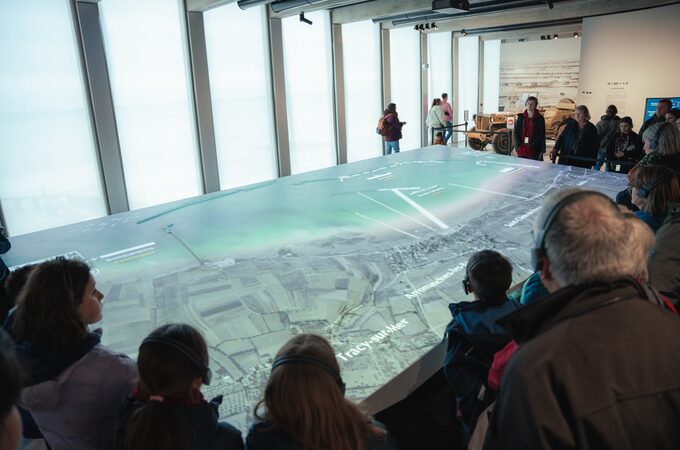The D-Day Museum at Arromanches-les-Bains on the Northern French coast has chosen Panasonic projectors to illustrate the activity before, during, and after the historic Normandy landings, bringing the events of 1944 to life like never before through multiple immersive and interactive experiences. The newly re-built Museum, working alongside AV integrator Auvisys, needed innovative, quiet and reliable projectors to bring the events of 1944 to life in four key areas of the exhibition. This included an auditorium, video mural, projection mapping and virtual reality projections. The Museum chose a combination of Panasonic’s state-of-the-art PT-MZ16K, PT-RZ790, and PT-RZ990 laser projectors, and ET-EMW300, ET-DLE060, ET-DLE085, and ET-DLE020 lenses. The Museum, the first of its kind, is based at the geographical epicentre of the D-Day landings on Gold Beach – one of five focal point beaches during the landings on June 6th, 1944. It depicts the invasion and subsequent construction of one of two artificial ports, named Mulberry harbours. ‘Mulberry B’ was constructed at Arromanches to transport men, equipment, and supplies inland during the summer of 1944, circumnavigating the need to immediately capture the heavily fortified deep-water ports of Cherbourg and Le Havre. Logistics was key in the liberation of Europe and at its height, a full truck laden with supplies was leaving the artificial port every 80 seconds on average. Using Panasonic’s projection mapping technology, visitors can truly visualise and understand the unprecedented logistical operation that was needed, through an immersive and interactive experience that complements the existing artefacts on display. With many of the projection environments confined to small and intimate spaces, the Museum required short-throw and ultra-wide-angle lenses, a key differentiator in choosing Panasonic technology. For the projection onto the large 28m² model that depicts post-D-Day operations, the Museum utilised a PT-RZ990 projector with an ET-DLE020 ultra-wide-angle lens only available from Panasonic. The immersive capabilities of Panasonic’s technology are best illustrated through a projection of the Mulberry B harbour onto a transparent holographic canvas, situated in front of windows that overlook the English Channel. This enables visitors to witness the artificial harbour being constructed, just as it was in less than 10 days, in 1944. The state-of-the-art dust-resistant optical engine, and 20,000 hours of maintenance-free operation offered by Panasonic’s PT-MZ16K and PT-RZ Series of projectors ensures that the exhibits can operate continuously without risk of damage. The discreet and quiet operating Panasonic projectors ensure that visitors are not disturbed, in an environment that necessitates respect and peace. Frédéric Sommier, Director of the D-Day Museum, added: “Thanks to the technological contribution of the new building, most notably through the use of Panasonic projectors, history meets the future. The use of immersive video helps visualise the history of the D-Day Landings, leveraging the power of the image over words.” Watch the video case study here: https://eu.connect.panasonic.com/gb/en/case-studies/panasonic-projectors-d-day-landing-museum-immersive-historical-experience More information on the museum: https://musee-arromanches.fr/

 O-Sense
O-Sense







.png)

